An Old Pond, The Frog Jumps
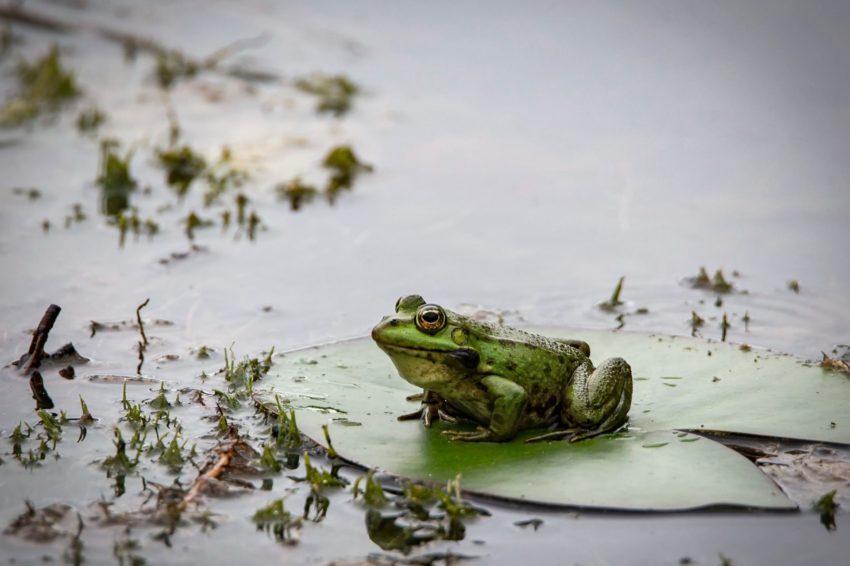
Top Image: Erzsébet Vehofsics on Unsplash
Composing Haiku
A haiku is but a single breath crystalized and captured forever. Well, for as long as paper or the digital realm last. Once, by an old pond (furu ike ya), Japan’s most famous haikuist saw a frog jump (Kawazu tabikomu) and heard the sound of water (mizu no oto). It wasn’t a grand experience or a life shattering event for Basho Matsuo, nor one of high romance or great tragedy. This was not even a complete event – we cannot be certain, after all, that the frog caused the splashing sound.
This simplicity gets to the very core of what haiku is and how such zen, peaceful experiences bring perhaps a greater value to our lives. I first got into composing haiku in 2005 after stumbling upon an issue of the Kyoto Journal at a bookstore in Osaka. Since 2004, I’d been placed in the great urban sprawl to teach English to middle schoolers. As a country boy from a small town in the Cotswolds who’d gone to an even more rural university secluded in the Welsh mountains, the sudden chaos of the Big O was both intoxicating and overwhelming.
The Beauty of the Haiku Moment
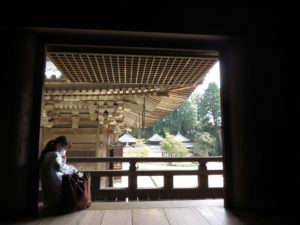 On reading this one article about Basho and haiku, I immediately tried my hand at composing them myself. At once, I felt at peace. This sense is even more intense so these days where we’re constantly connected to technology via phones, social media, and even in the classroom where students now use laptops to access teaching materials or to research projects and compositions. The latter of which led to some of my year 6 students trying to pronounce the word “photosynthesis.” Many of these tools and technologies are good, but they also disrupt our inner peace to a certain extent.
On reading this one article about Basho and haiku, I immediately tried my hand at composing them myself. At once, I felt at peace. This sense is even more intense so these days where we’re constantly connected to technology via phones, social media, and even in the classroom where students now use laptops to access teaching materials or to research projects and compositions. The latter of which led to some of my year 6 students trying to pronounce the word “photosynthesis.” Many of these tools and technologies are good, but they also disrupt our inner peace to a certain extent.
A solution many find, myself included, is to wander off into the woods for a spot of hiking or to cycle along country roads and river paths. During these times, as we calm our souls, we begin to take in more of the world around us. There we see the line up of ducks along the river, the butterfly flittering alongside us as we walk through Korakuen, and the falling leaves creating a carpet of red around Himeji Castle. These are haiku moments we can capture in verse. Think of them as photographs with words.
What are the Rules of Haiku?
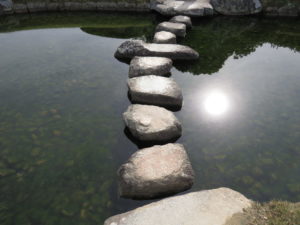 So, after all this introduction, how do haiku work? The haiku is the final, most concise, form of Japanese poetry. I say final because it developed for over a century as katauta – witty retorts of 17 syllables, then longer poems such as waka (similar to tanka), choka, and renga, before the first verse of a renga known as a hokku split off to become a haiku.
So, after all this introduction, how do haiku work? The haiku is the final, most concise, form of Japanese poetry. I say final because it developed for over a century as katauta – witty retorts of 17 syllables, then longer poems such as waka (similar to tanka), choka, and renga, before the first verse of a renga known as a hokku split off to become a haiku.
In theory, a haiku is 17 syllables (called On) split into a 5-7-5 format. Each poem will have a break in it for emphasis or to change direction. This is known as a kireji. The most important part of a haiku is the kigo. This is the seasonal word or feeling. It does not have to be explicit but needs to be there. For example, mentioning pumpkin would conjure thoughts of autumn, plum might make you think of early spring, and strawberries of late June (if you are English like me). An example:
On gliding past cars
Stuck behind cycling school girls,
Crickets start to chirp.
Or how about this one from today:
A bull-headed shrike
Preens and poses proud on my bike,
I walk instead.
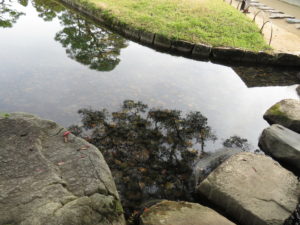 As you’ll note with that second one, there’s one less syllable. In English we’re able to express far more with 17 syllables than Japanese is able to with 17 On. This is because we have far more one-syllable words and we’re not concerned by one-syllable words with 2 On. For example, kyu sounds like 1 syllable but is 2 On – ki + small u. Osaka is actually 4 On – Oo-sa-ka while in English it’d be 3 syllables. It’s ok to have 10-17 syllables in an English haiku. The traditional translation of Basho’s pond haiku has only 10:
As you’ll note with that second one, there’s one less syllable. In English we’re able to express far more with 17 syllables than Japanese is able to with 17 On. This is because we have far more one-syllable words and we’re not concerned by one-syllable words with 2 On. For example, kyu sounds like 1 syllable but is 2 On – ki + small u. Osaka is actually 4 On – Oo-sa-ka while in English it’d be 3 syllables. It’s ok to have 10-17 syllables in an English haiku. The traditional translation of Basho’s pond haiku has only 10:
An old pond
The frog jumps
Sound of water.
We could get into the weeds about the rules, but let’s say the joy of haiku is that these basic rules get us to think about the small moments in the world around us and to find a concise way to express them. They are beautiful moments like poetic photographs using words. Maybe they’re just for you rather than for others to see, but nonetheless are full of meaning.
Conclusion: We Can All Haiku
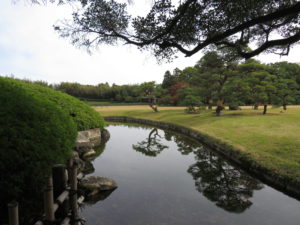 Before I wrap up, a quick mention of other forms. Haiku are strictly about seasonal, natural moments in life. They’re full of nature. If you want to write about human foibles, then these have the same 5-7-5 format with a kireji and are known as senryu. If you’d like to write longer ones try waka and tanka (5-7-5-7-7 or 7-7-5-7-5) or the choka which is 5-7-5-7-5 ad infinitum until you wish to finish, then end with a 7-7.
Before I wrap up, a quick mention of other forms. Haiku are strictly about seasonal, natural moments in life. They’re full of nature. If you want to write about human foibles, then these have the same 5-7-5 format with a kireji and are known as senryu. If you’d like to write longer ones try waka and tanka (5-7-5-7-7 or 7-7-5-7-5) or the choka which is 5-7-5-7-5 ad infinitum until you wish to finish, then end with a 7-7.
In conclusion, if you’d like to take a step back from the hectic classroom, the packed trains, and shopping madness, take a pad of paper with you (special haiku notebooks do exist) and a pen. Note down what you see around you that day. You’d be surprised by the little events and moments. Write them down in little haiku moments even if you keep them for yourself. I have found haiku to be great ways to remember these things, much nicer than taking photos or sharing online. Maybe you will too. Let me know – I’d love to see what you compose.
Photo Credits:
Top Image: Erzsébet Vehofsics on Unsplash
Additional photos provided by M.W. Wollacott
All other content (text) created by the original author and © 2021 MUSUBI by Borderlink
RELATED
-
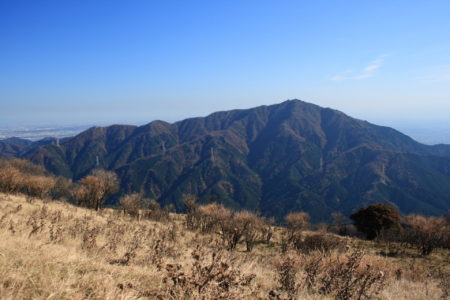
Reconnect with Nature at Sacred Mt. Oyama
Top Photo: “Mt. Ōyama seen from Mt. Sannotō, Kanagawa, Japan” by Σ64, licensed under the Creative … -
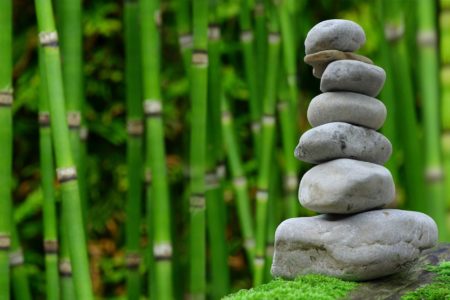
Come for the Shinto, Stay for the Zen
Top Image: Schäferle via Pixabay Buddhist temple in Yamaguchi prefecture.What’s the difference between a shrin… -
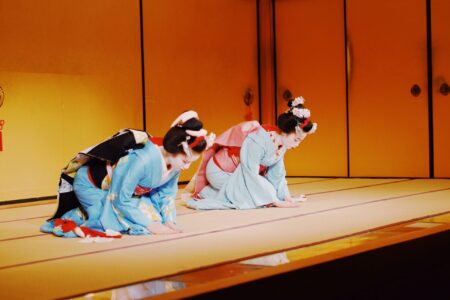
Take a Bow: How Japan Changed Me
Top photo: wang xi on Unsplash Sure, when you live overseas you expect some things will be different from the…
PEOPLE

M.W. Wollacott
From England
Returned to Japan in the autumn of 2021


